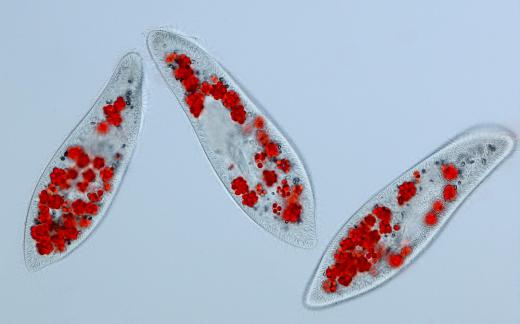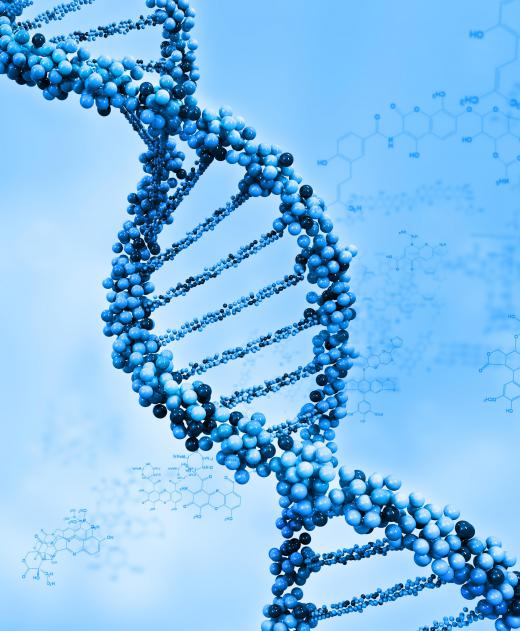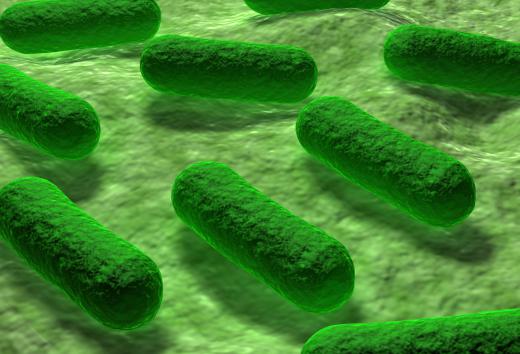What is Binary Fission?
 Mary McMahon
Mary McMahon
Binary fission is a form of asexual reproduction which is used by all prokaryotic organisms, and some eukaryotic organisms like fungi as well. In addition to being used to duplicate whole organisms, this process is also utilized within the cells of eukaryotic organisms by some of the organelles. In this process, two daughter cells are produced by a single parent cell which effectively clones itself. The Escherichia coli bacterium has been used extensively by researchers studying binary fission, as it provides a classic example of this asexual reproduction method in action, and it is very abundant.
In binary fission, the cell starts by duplicating its DNA to create two complete sets, and then growing to a size much larger than it usually is. As the cell grows, the sets of DNA move to opposite ends of the cell. Once the cell has achieved the right size, it splits in two, creating two daughter cells with identical DNA. This process is classically used when an organism is living in a stable environment.

In addition to reproducing via binary fission, many prokaryotes can also reproduce sexually. Sexual reproduction is important, because it contributes to genetic diversity by blending the genes of various individuals. Repeated sessions of binary fission would reduce genetic diversity, making the species as a whole very susceptible to being wiped out. Sexual reproduction mixes things up, keeping the species diverse and promoting the development of beneficial mutations.

The timing of binary fission is important, as organisms must do it at the right moment. The process is partially regulated by the septal ring, a ring of proteins which forms around the middle of the cell, encouraging it to split evenly without damaging the DNA or the cell wall. Errors in the fission process can cause the formation of daughter cells with incomplete DNA, or extra copies of certain genes. The septal ring is designed to prevent this.

Within the cells of eukaryotic organisms, organelles such as the mitochondria can be reproduced with this method. Binary fission within the cell is usually timed to take place when the cell is in the process of replicating and dividing as part of the cell cycle. Errors can occur during this process, causing problems with the daughter cells produced during cell division. These errors can cause cell death because the new cell cannot survive on its own, or they may lead to conditions like cancers, caused by errors in cell division which lead to a proliferation of cell growth.
AS FEATURED ON:
AS FEATURED ON:













Discussion Comments
That would just be the weirdest thing I've ever seen! That would make a good movie.
Well, it's good to see that e.coli has actually been good for something. I wonder though, how do scientists actually use that safely in their research? Is there not some less-deadly bacteria they could use to learn about this process?
Wouldn't it be freaky if humans could reproduce themselves like this? No birth and all that, just producing a bunch of clones. Sounds like a good plot for a horror movie to me...
Post your comments